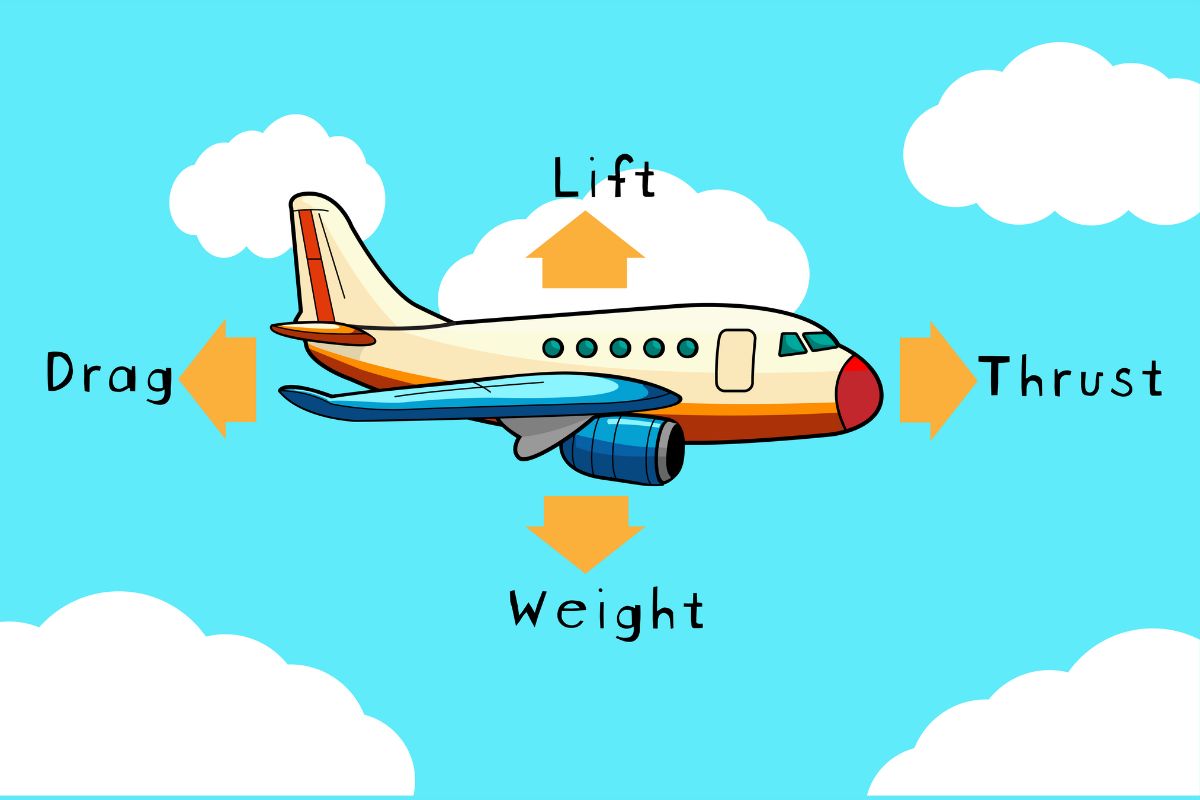
Drag force is a fascinating concept that affects everything from airplanes to cyclists. But what exactly is it? Drag force is the resistance an object encounters when moving through a fluid, like air or water. This force can slow things down or make them work harder to maintain speed. Understanding drag force is crucial for designing efficient vehicles, sports gear, and even buildings. It’s not just for scientists and engineers; anyone curious about how things move can find it interesting. Ready to learn some cool facts about drag force? Buckle up, because we’re diving into the world of aerodynamics and fluid dynamics!
What is Drag Force?
Drag force is a resistance force caused by the motion of a body through a fluid, such as air or water. This force acts opposite to the direction of the object's motion. Understanding drag force is crucial in fields like aerodynamics, engineering, and sports.
- Drag force is proportional to the square of the velocity of the object moving through the fluid.
- Air resistance is a common type of drag force experienced by objects moving through the air.
- Drag coefficient is a dimensionless number that quantifies the drag or resistance of an object in a fluid environment.
- Streamlining reduces drag by allowing fluid to flow smoothly over the surface of an object.
- Parachutes use drag force to slow down the descent of a person or object.
Types of Drag Force
Different types of drag forces affect objects in various ways. These types include form drag, skin friction, and wave drag.
- Form drag is caused by the shape of an object and how it disrupts the fluid flow.
- Skin friction drag results from the friction between the fluid and the surface of the object.
- Wave drag occurs when an object moves through a fluid at high speeds, creating waves.
- Induced drag is associated with the creation of lift in aerodynamic objects like airplane wings.
- Pressure drag is another term for form drag, emphasizing the pressure differences around the object.
Factors Affecting Drag Force
Several factors influence the magnitude of drag force experienced by an object. These factors include the object's shape, surface roughness, and fluid properties.
- Shape: More streamlined shapes experience less drag.
- Surface roughness: Smoother surfaces reduce skin friction drag.
- Fluid density: Higher fluid density increases drag force.
- Velocity: Higher speeds result in greater drag force.
- Cross-sectional area: Larger areas facing the fluid flow increase drag.
Applications of Drag Force
Drag force plays a significant role in various applications, from sports to engineering. Understanding and managing drag can lead to improved performance and efficiency.
- Automotive design: Reducing drag improves fuel efficiency in cars.
- Aircraft design: Minimizing drag enhances flight performance and fuel economy.
- Sports: Athletes wear streamlined clothing to reduce drag and improve speed.
- Maritime engineering: Ships are designed to minimize drag for better fuel efficiency.
- Cycling: Cyclists use aerodynamic positions to reduce drag and increase speed.
Measuring Drag Force
Accurately measuring drag force is essential for optimizing designs and improving performance. Various methods and tools are used to measure drag force in different contexts.
- Wind tunnels: Used to test and measure drag on scale models of vehicles and structures.
- Computational fluid dynamics (CFD): Simulates fluid flow and drag forces using computer models.
- Force sensors: Measure drag force directly on objects in motion.
- Water flumes: Used to study drag forces on objects moving through water.
- Smoke trails: Visualize airflow patterns and identify areas of high drag.
Reducing Drag Force
Reducing drag force can lead to significant improvements in performance and efficiency. Various techniques and strategies are employed to minimize drag in different applications.
- Aerodynamic shaping: Designing objects with streamlined shapes to reduce form drag.
- Surface treatments: Applying smooth coatings to reduce skin friction drag.
- Active flow control: Using devices like vortex generators to manage airflow and reduce drag.
- Boundary layer control: Techniques to delay flow separation and reduce drag.
- Drag-reducing additives: Chemicals added to fluids to reduce drag in pipelines.
Interesting Facts About Drag Force
Drag force is a fascinating topic with many interesting aspects and applications. Here are some intriguing facts about drag force that highlight its importance and impact.
- Birds: Birds have evolved streamlined bodies to minimize drag during flight.
- Spacecraft: Spacecraft experience drag force when re-entering Earth's atmosphere, requiring heat shields to manage the intense heat generated.
- Sports cars: High-performance sports cars often have low drag coefficients to achieve higher speeds and better fuel efficiency.
The Final Word on Drag Force
Understanding drag force helps us appreciate how objects move through fluids like air and water. From designing faster cars to creating more efficient airplanes, drag force plays a crucial role. It’s not just about speed; it’s about energy efficiency and safety too. Engineers and scientists constantly study drag to improve technology and make our lives better. Next time you see a sleek sports car or a high-flying jet, remember the science of drag force working behind the scenes. This knowledge isn’t just for experts; it’s something we all encounter daily. Whether you’re biking against the wind or watching a leaf float down a stream, drag force is at play. Keep these facts in mind, and you’ll start noticing the invisible forces shaping our world.
Was this page helpful?
Our commitment to delivering trustworthy and engaging content is at the heart of what we do. Each fact on our site is contributed by real users like you, bringing a wealth of diverse insights and information. To ensure the highest standards of accuracy and reliability, our dedicated editors meticulously review each submission. This process guarantees that the facts we share are not only fascinating but also credible. Trust in our commitment to quality and authenticity as you explore and learn with us.
